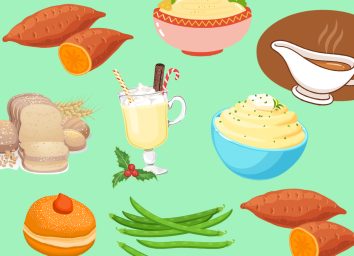The 10 Healthiest Holiday Foods, According to an RD
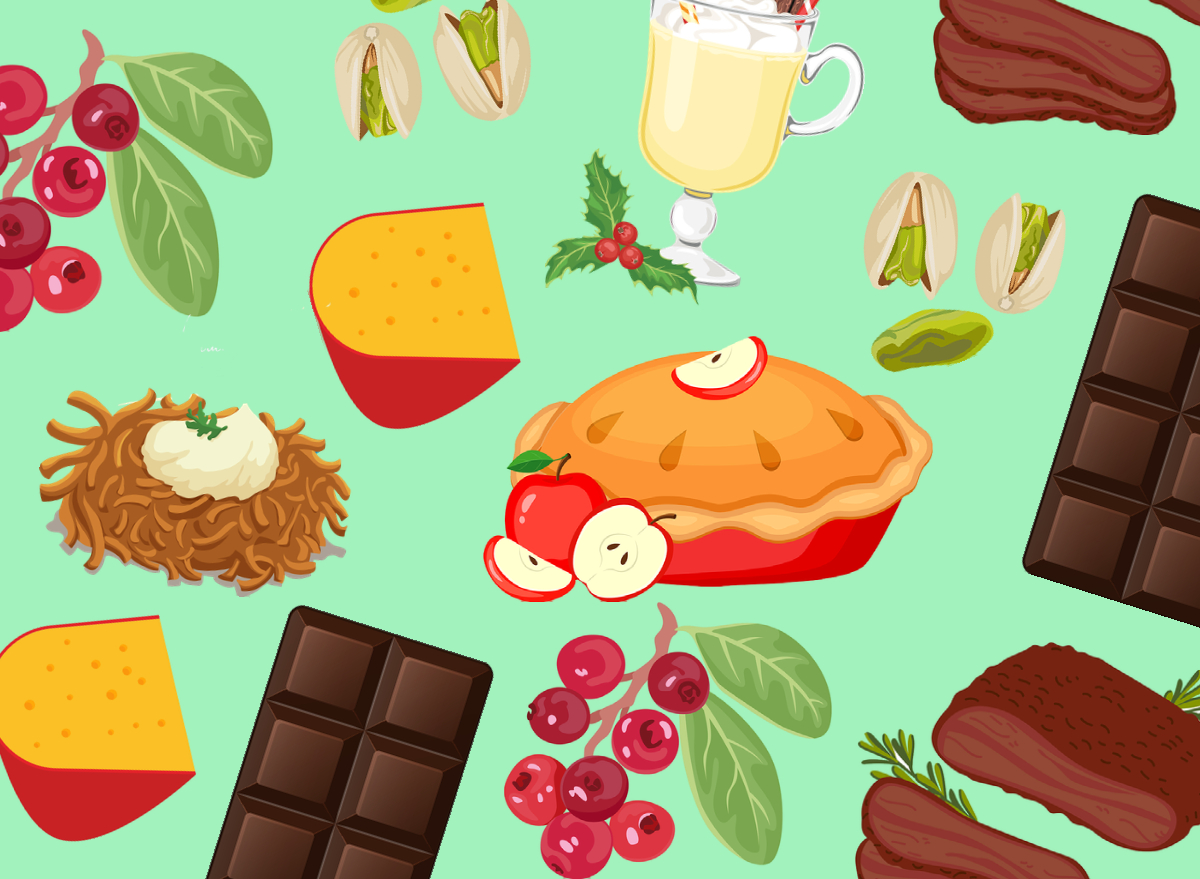
If you spend December trying to avoid Christmas and Hanukkah goodies, you can stop now. Yes, it is possible to overindulge in celebratory treats, but that doesn’t mean it pays to constantly avoid your favorites, no matter how caloric. There’s so much negative buzz about holiday foods that it’s easy to believe they are without any redeeming qualities, but that’s just not the case.
Seasonal goodies often may have a bad reputation as nothing more than empty calories. Truth is, many festive foods do offer good nutrition. You might be surprised, we know, but it’s not all doom and gloom when it comes to holiday favorites. Read on to find out which holiday foods aren’t necessarily bad news, and what exactly makes them among the healthiest options. And while you’re at it, be sure to try out any of the 21 Best Healthy Cooking Hacks of All Time.
Apple Pie
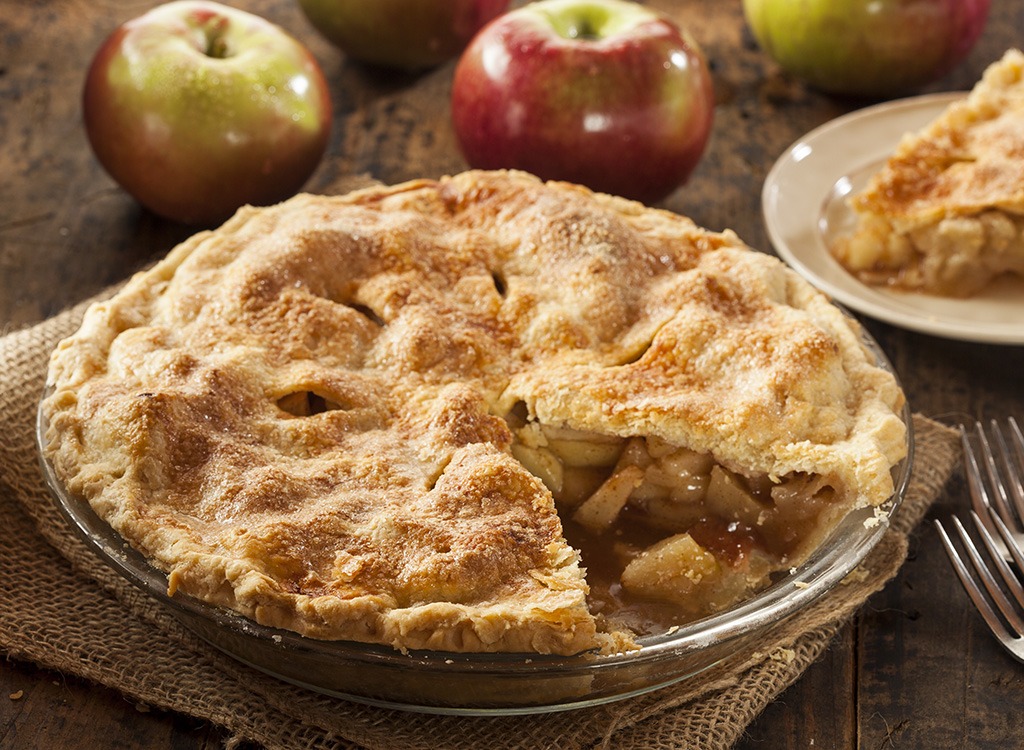
What good could come of dessert? Plenty, when it involves fruit. Apples pack fiber that promotes fullness and regularity, and they’re about 25% water to keep you hydrated. Beneficial gut bacteria feed on the pectin found in apples to help prevent heart disease. And, apple skins supply quercetin, which has been linked to improved mental and physical performance and a reduced risk for infection.
Blintzes
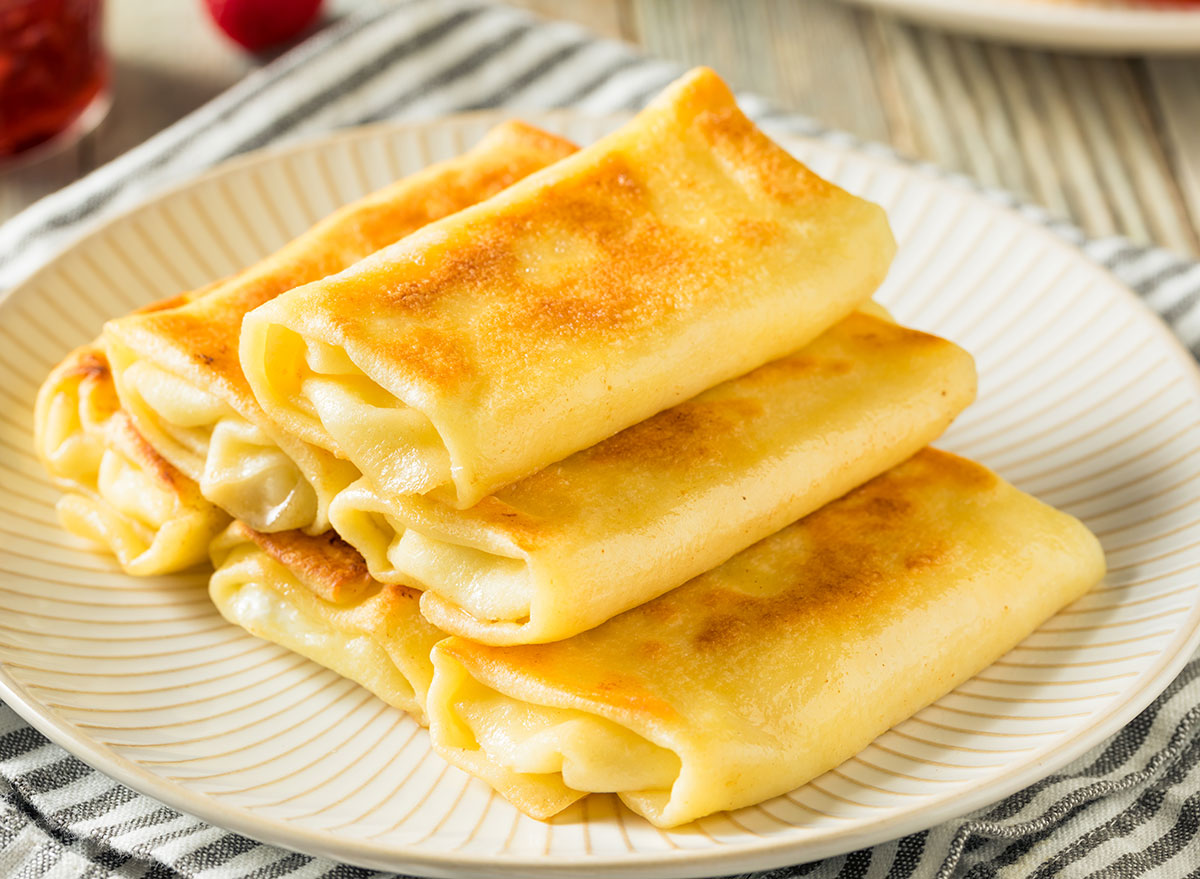
When you bite into a blintz, you’re probably not thinking about its’ healthy ingredients. The eggs used to make the thin pancakes and the ricotta cheese in the filling are brimming with nutrients.
You know that eggs supply high-quality protein, but their choline content is formidable, too. Eggs are one of the most concentrated food sources of choline a must-have nutrient for brain development during pregnancy, and necessary for memory, mood, and muscle control throughout life.
Like eggs, ricotta cheese also contains choline and protein, so blintzes that are prepared with ricotta instead of cream cheese are nutritionally superior. That’s because cream cheese is high in fat and low in nutrients.
Beef Brisket
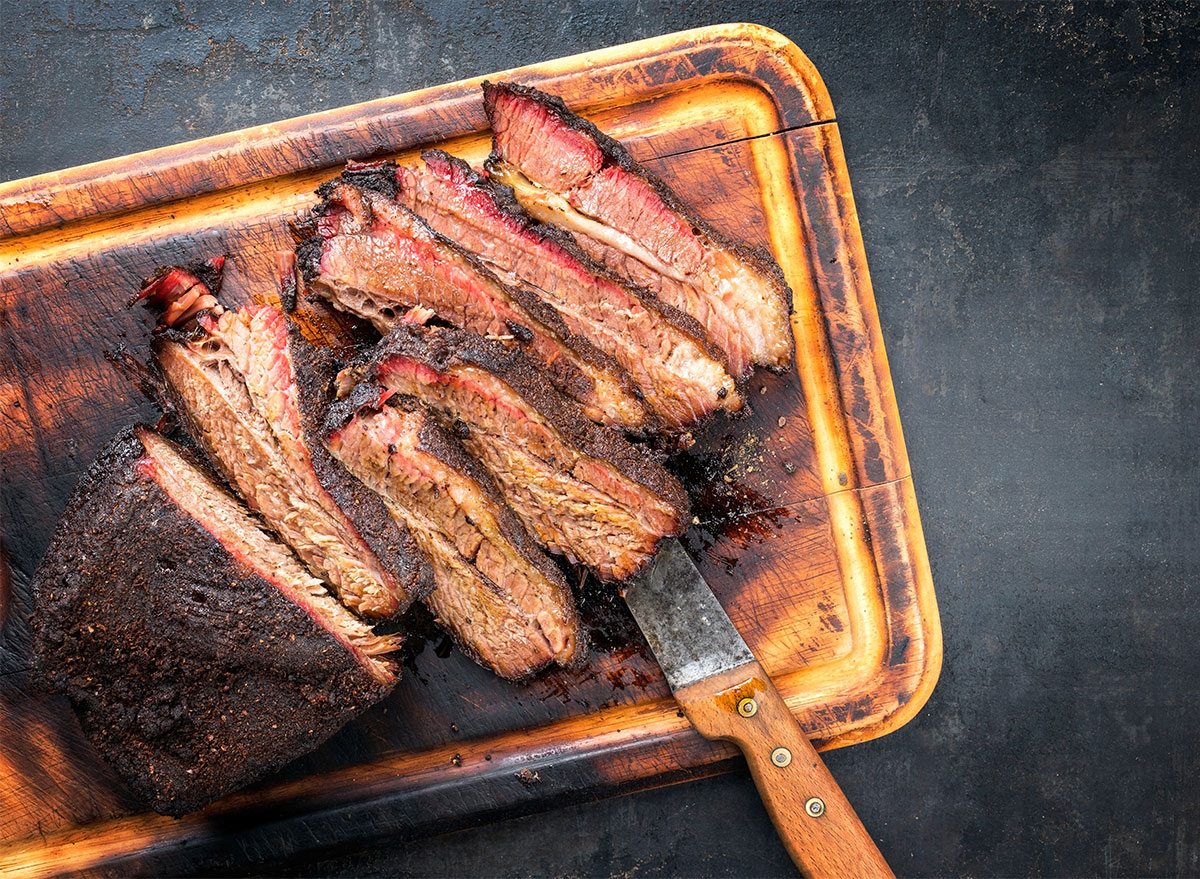
Tender beef brisket on a bed of roasted root vegetables often appears on the Hanukkah table. And that’s a good thing! The protein and fiber in beef produce are a dynamic duo that blunts your appetite and reduces the chances of stuffing yourself. Just three ounces of brisket, a low-fat cut of beef, supplies 28 grams of protein, and 20% of the suggested daily choline intake, as well as a long list of other nutrients, including the minerals iron, zinc, and selenium. You actually need selenium to regulate metabolism and reproduction, to thwart cell damage, and reduce the risk of infection.
Cheese
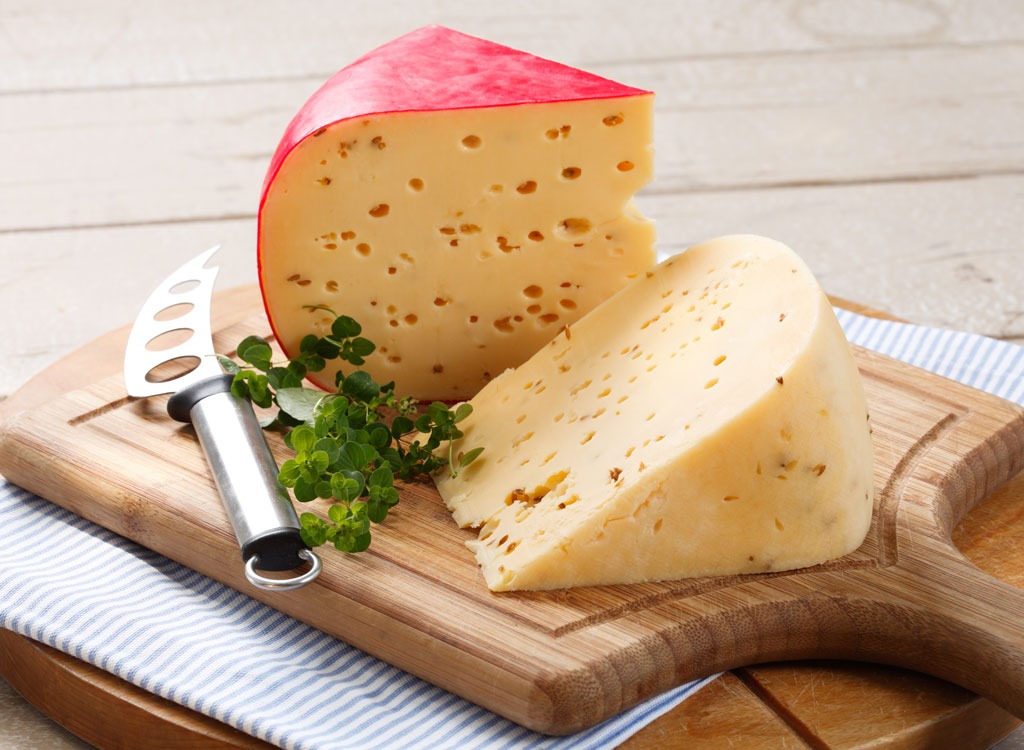
Holiday celebrations nearly always involve cheese, which is known for its high calcium content. One and a half ounces of hard cheese, such as cheddar, Havarti, or Gouda, supplies as much calcium as eight ounces of milk, plus 10% of the riboflavin and 14% of the phosphorous you need in a day. Riboflavin is a B vitamin that helps your body harness the energy in food, and it plays a role in cell function, growth, and development. Phosphorous is necessary for making energy, and for other important functions.
If you’re concern about the saturated fat in cheese, you can take heart in a growing body of evidence, including this study that suggests cheese doesn’t have as much of an effect on blood cholesterol levels as once thought. So go ahead and enjoy some!
Cranberries
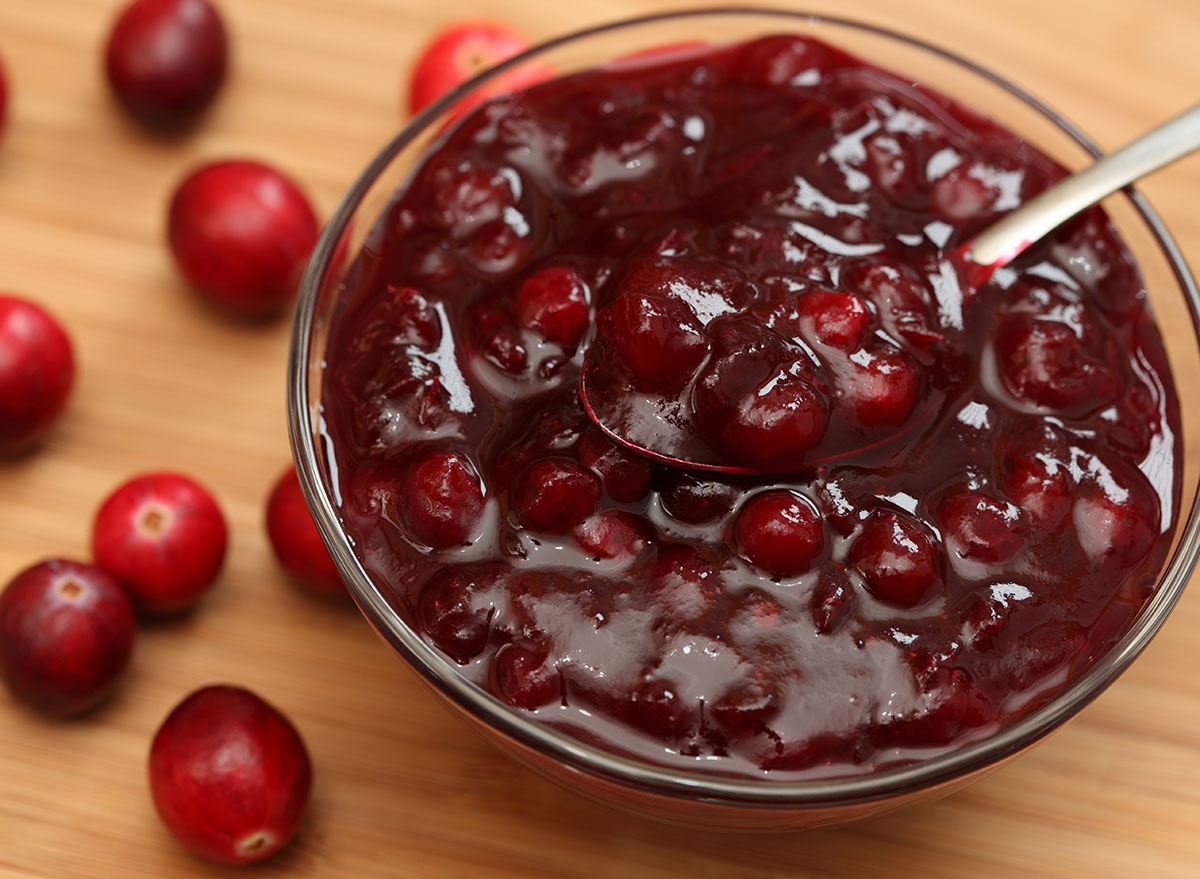
These tart berries get their bright holiday hue from anthocyanins, which also play a role in eyesight, and reduce the risk for cancer and heart disease.
Another group of compounds found in cranberries called proanthocyanidins offer infection protection by blocking bad bacteria from attaching to the urinary tract. Research shows that consistent cranberry consumption helps prevent urinary tract infections in otherwise healthy women.
Fresh cranberries have the most nutrients, but it’s unlikely you’ll be munching on raw berries at the holiday table. Homemade cranberry sauce contains far more anthocyanins and proanthocyanidins than store-bought varieties. While sweetened dried cranberries are low in anthocyanins, they have proanthocyanidins. And remember, unsweetened cranberry juice has more nutrients than cranberry juice cocktail!
Looking for more tips? Sign up for our newsletter to get daily recipes and food news in your inbox!
Dark chocolate
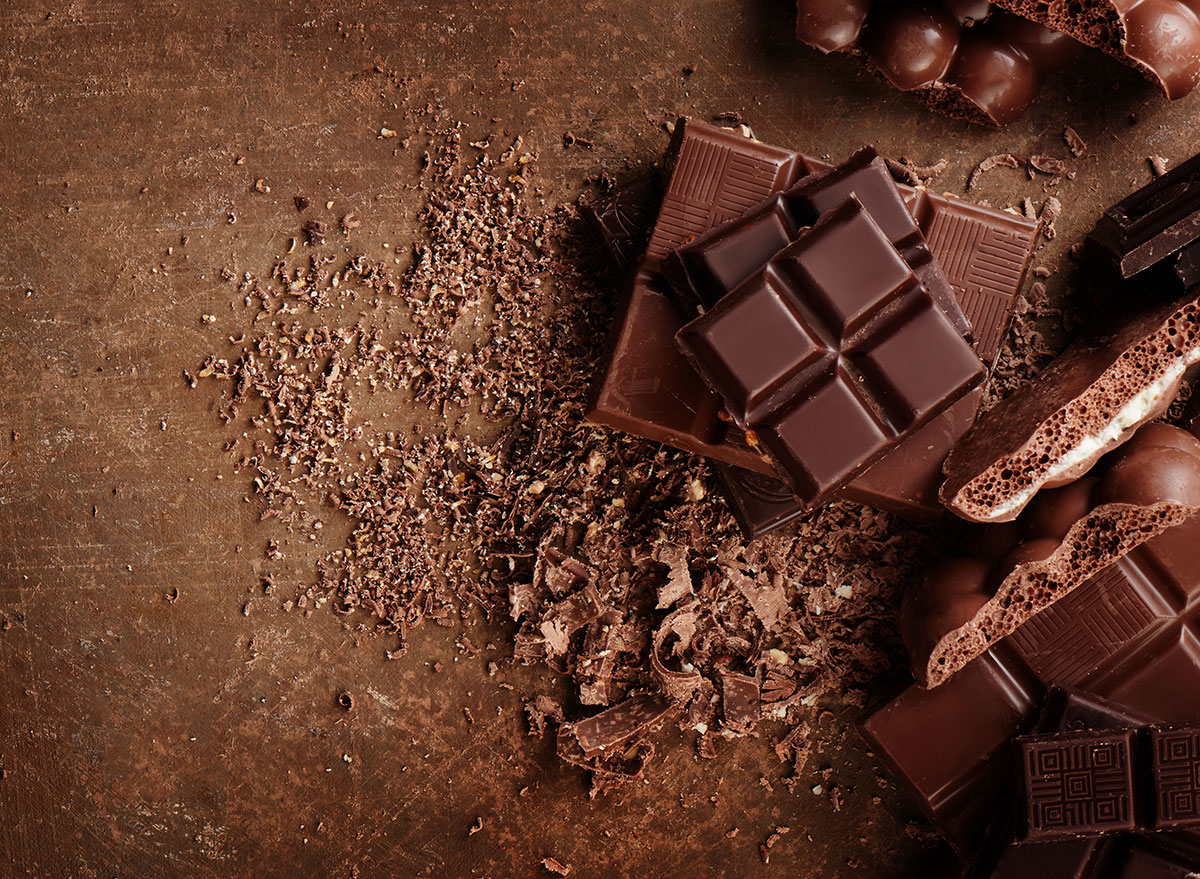
Chocolate is one of those feel-good foods that can be good for you, too. Not all chocolate is created equal, however. The darker the chocolate, the greater the benefits, which includes reducing blood cholesterol levels and lowering blood pressure. Dark chocolate offers more flavanols, found in cocoa beans, that help promote good health, so choose 70% dark chocolate or higher.
Chocolate is also a source of magnesium, a mineral that has a major role in wellbeing. Magnesium is part of more than 300 enzymes that participate in regulating blood glucose levels, muscle contraction, and a normal heartbeat. More than 50% of all the magnesium in the body is stored in bones, contributing to a strong skeleton.
When you warm up by the fire with hot chocolate, be sure to make it with unsweetened cocoa powder. Avoid Dutch-processed cocoa powder; it’s treated with alkali to improve flavor and appearance, but alkali robs cocoa powder of flavanols.
Eggnog
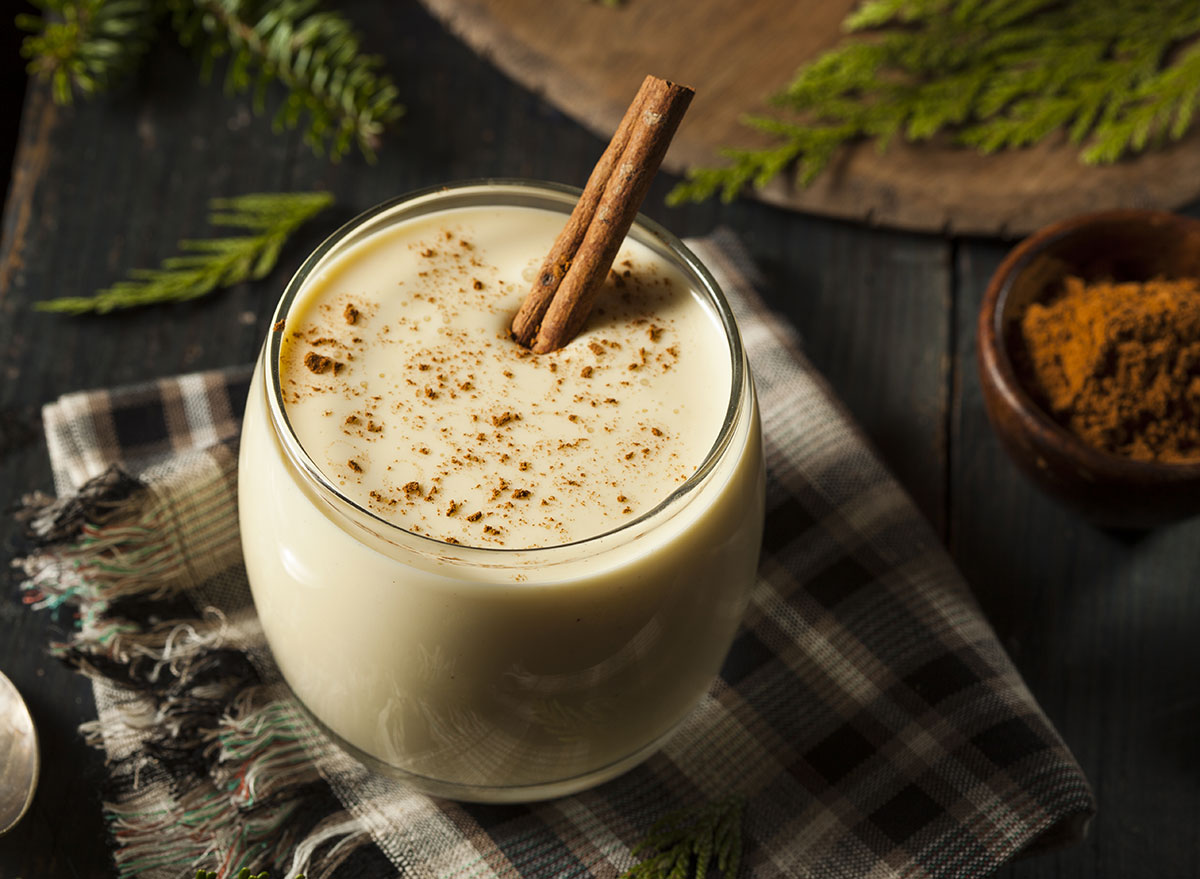
Nothing says the holiday season quite like eggnog. It’s sweet, thick, and indulgent, and can be surprisingly good for you, as holiday foods go. Packaged dairy eggnog supplies as much protein, calcium, and vitamin A as milk, although with a lot more calories, so you’ll want to keep that in mind! Eggnog is also a decent source of potassium, a mineral the body needs for kidney and heart function, blood pressure regulation, and a healthy central nervous system.
Store-bought eggnog is pasteurized, while traditional eggnog recipes call for raw eggs that could contain salmonella and make you skip. Make eggnog yourself at home with pasteurized liquid eggs. Eggnog that is prepared with fortified soy milk is a vegan option that provides a festive flavor without as many calories, but with less protein and potassium.
Pistachios
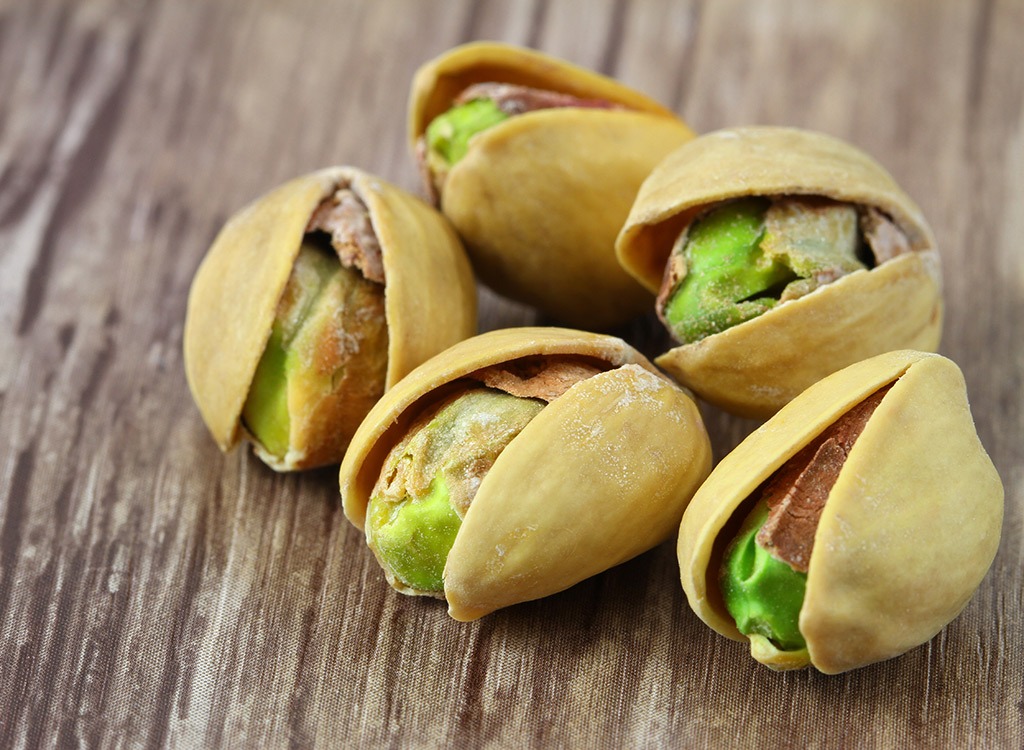
Pistachios are little nuggets of plant protein, heart-healthy fat, vitamins, minerals, and phytonutrients that protect your cells. As an added plus, pistachios in the shell may provide a solution to mindless munching.
Cracking pistachio shells to get at the nuts takes more effort than popping shelled pistachios into your mouth without thinking about what you’re eating. Shelling pistachios slows you down, and can leave you feeling more satisfied, so you eat less food. And, empty pistachio shells are a visual cue of how much you have consumed. A one-ounce portion of shell-in pistachios, about the amount that fits into your palm, is all you need to reap their many benefits.
Potato Latkes
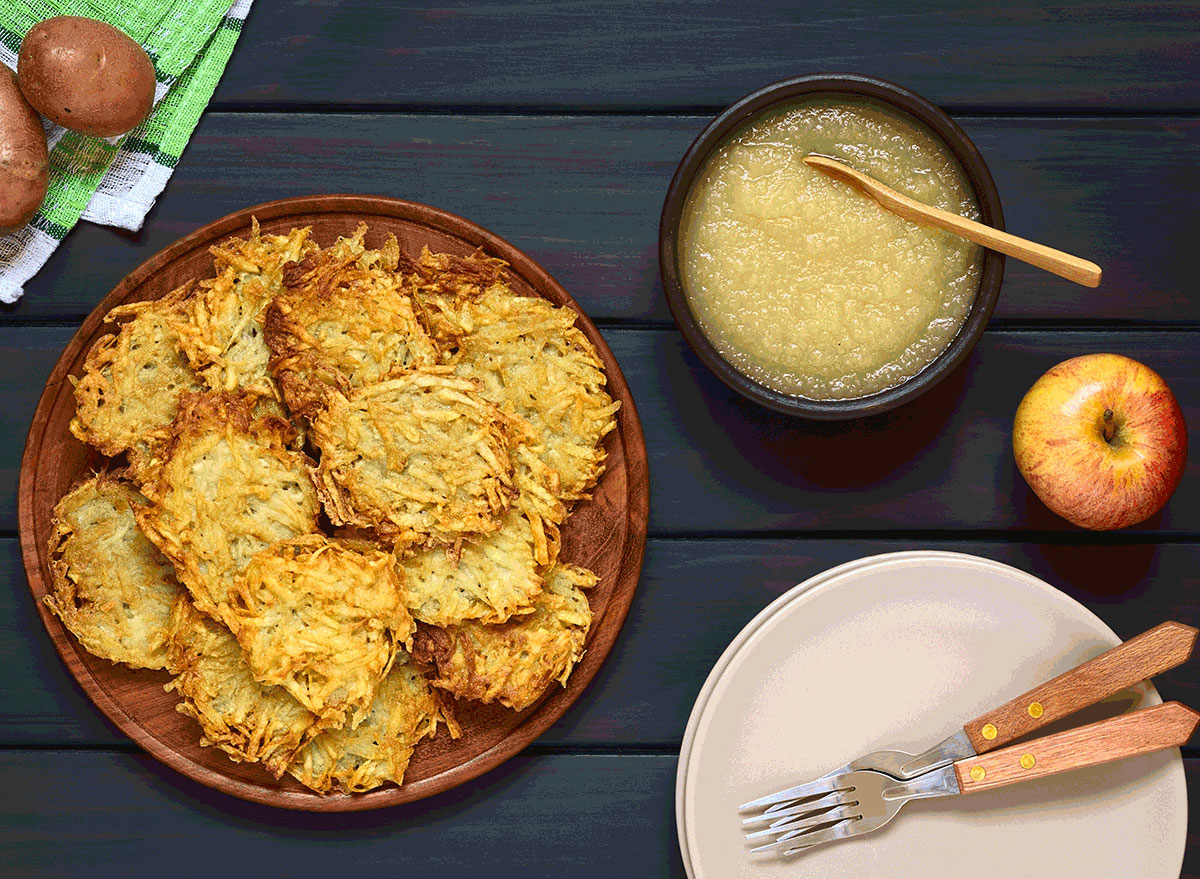
Potatoes, eggs, salt, oil. What’s not to love? Even the sour cream garnish for latkes has something to offer.
You may shy away from foods such as latkes because they are starchy and fried, but that’s not really necessary. Potatoes are filling and they pack potassium, manganese, fiber, and vitamin B6, which your body needs for over 100 functions involved in metabolism. Vitamin B is also necessary for brain development during pregnancy and to support the immune system.
Don’t look down your nose at the sour cream used to garnish potato latkes! While Greek yogurt gets a lot of attention, sour cream has just as much calcium, so go ahead and have a dollop.
Pumpkin
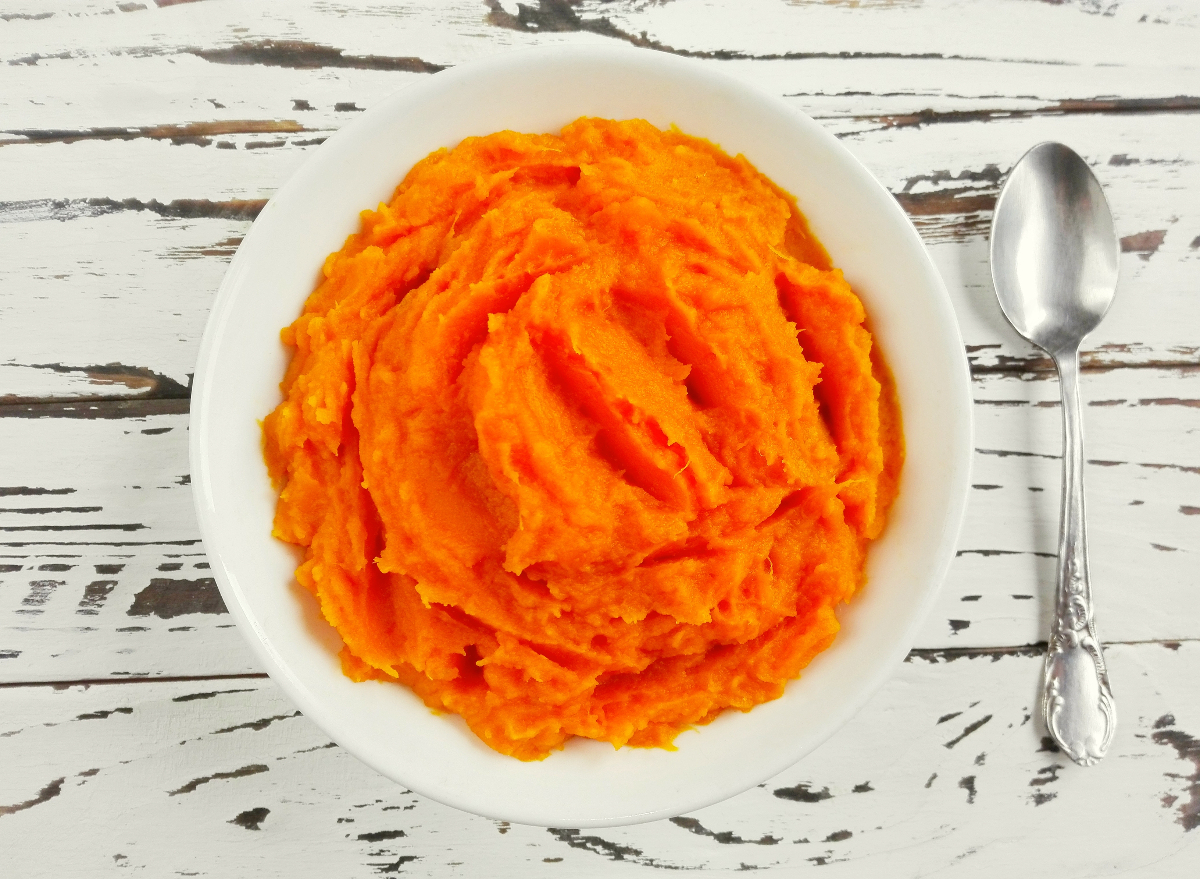
Pumpkin is polarizing, there’s no getting around that. Whether you love it or hate it, you have to respect its nutritional profile.
Pumpkin packs potassium, fiber, and carotenoids, compounds that contribute to pumpkin’s orange glow, while doing battle with free radicals, dangerous forms of oxygen that can damage cells, and serving as the raw materials for the body’s production of vitamin A. It’s also an excellent source of vitamin K, involved in blood clotting and bone health, and provides vitamin E, which is typically found in foods with much more fat and calories.
Plus, pumpkin has manganese, a mineral that’s necessary for deriving energy from food, protecting cells from damage, and for a healthy immune system, among other functions.

